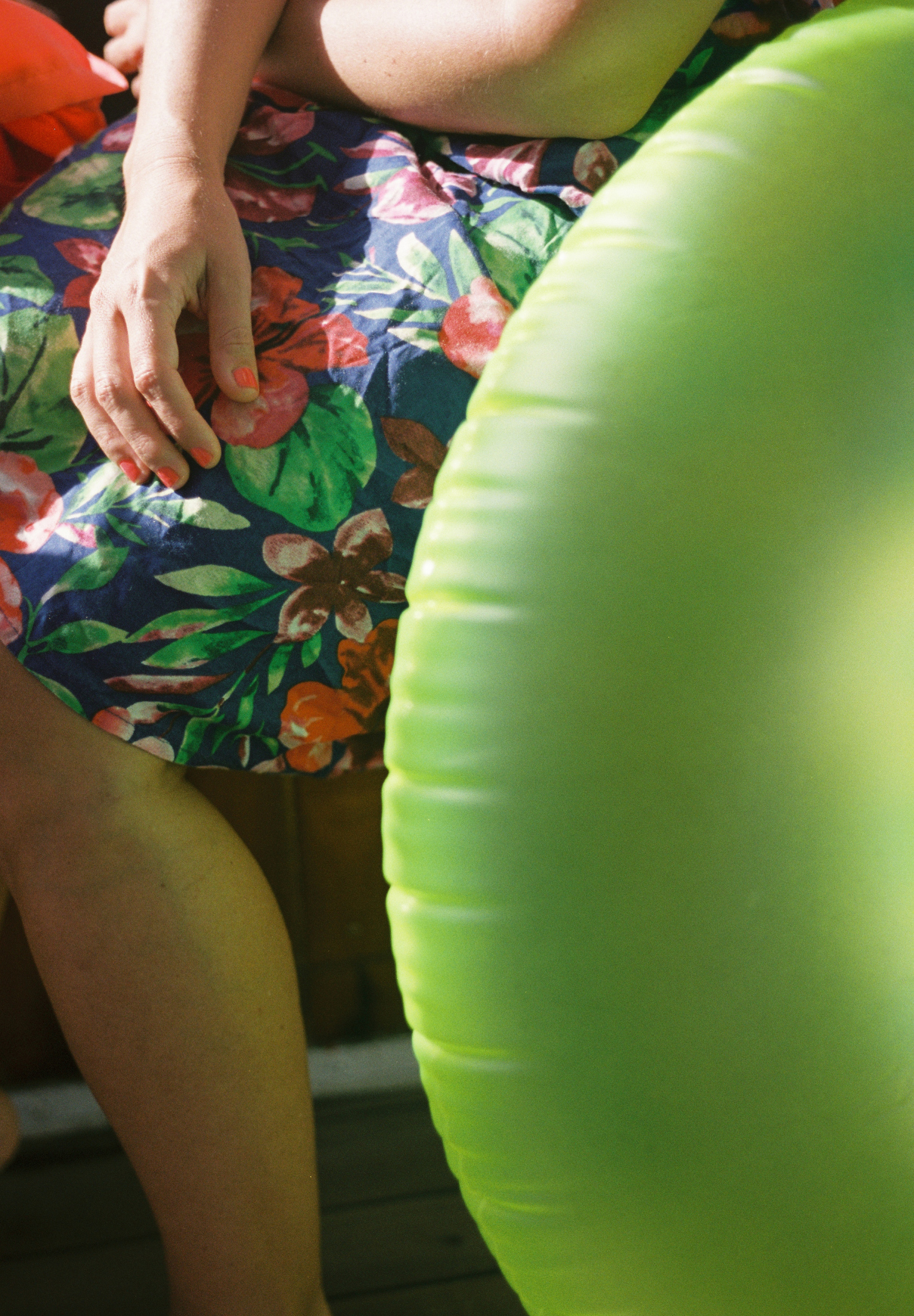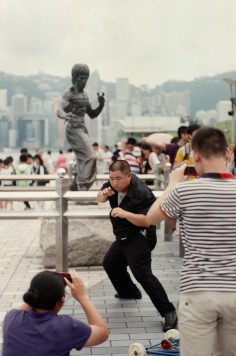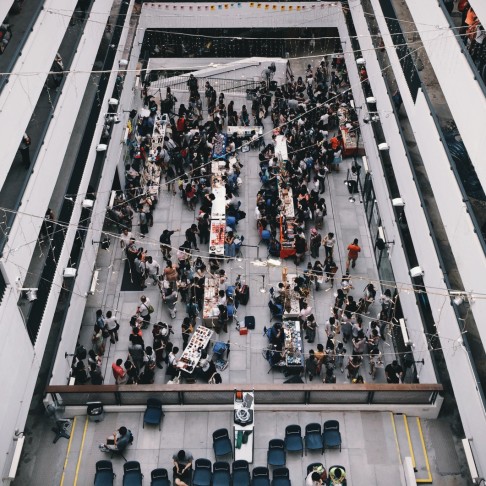Smartphone vs film: Two Hong Kong photographers go head-to-head
Smartphone cameras are ubiquitous, but will they ever replace traditional photography? We invite two very different snappers to share their thoughts and images
THE ANALOGUE PHOTOGRAPHER
One of the things Luke Casey loves most about shooting on film is the element of suspense.
“The excitement I get when I process film and see the images for the first time is truly magic,” he says. “It’s like the feeling I used to get when I opened up a pack of football stickers as a kid.”
The 28-year-old photographer grew up with disposable cameras and believes the way we enjoy photos today has become more fleeting. “We’re experiencing moments through the screen of our digital cameras instead of experiencing them first-hand. And there’s less magic in the way we relive the moments.
“We have thousands of images hidden in files on our computers and it’s incredibly hard to manage them.
Sharing images online is great, but there is something much more personal about sitting around with your family and flicking through the pages of a photo album.”
Sharing images online is great, but there is something much more personal about sitting around with your family and flicking through the pages of a photo album.”
Casey, from Devon in southern England, started shooting in Japan around 2010. His first professional gig, for Dazed & Confused magazine in London, served as a springboard for his career. Last year he held his first exhibition here, “Portholes” — a record of the three and a half months he spent touring the world on a ship with Japanese NGO Peace Boat.
While he enjoys new technology, he prefers the analogue process when it comes to shooting. “It’s also about aesthetics. You don’t need any software, apps or filters to get great photos. The colours, grain and contrast are beautiful in their very nature.”
Click pictures to enlarge
 A woman next to an inflatable ring. A woman next to an inflatable ring. |  A pedestrian in front of Canton House. A pedestrian in front of Canton House. |
OLD FAITHFUL
The camera: I’ve had the Nikon FM2n almost four years now and I have no desire to shoot with anything else. It’s simple, well made, and nothing feels better than the heavy clunk when you push the shutter. You can get amazing analogue cameras in the Champagne Court in Tsim Sha Tsui. Start with a 35mm camera as the film is cheap and you get a lot of shots for your money. When you are a bit more confident, consider a medium format camera which lets you create much larger prints.
Go outside: film has the power to make everything look beautiful. Take your camera outside and shoot anything and everything and get a feel for the colours and textures you will get from film. Compare it to digital and you may never go back.
 Posing in front of the Bruce Lee statue. Posing in front of the Bruce Lee statue. |  At Victoria Harbour. At Victoria Harbour. |
 A boy being carried along a street. A boy being carried along a street. |  A roll of Fuji film and a cold ice tea. A roll of Fuji film and a cold ice tea. |
 An airplane as a funeral offering. An airplane as a funeral offering. |  Foliage between exhaust vents. Foliage between exhaust vents. |
Photos by Luke Casey
Try processing: you can easily find all the materials and chemicals you need to create your own darkroom here in Hong Kong. And look no further than online tutorials for how to do it. Processing your own roll of film from start to finish is the ultimate sense of achievement. If you are too busy for that, though, just head to Stanley Street and process a roll of film within an hour for HK$45.
Raid your parents’ drawers: they most likely still have their old cameras laying around somewhere at home. You might find a real classic.
Get to know your camera: mine has no auto setting or autofocus at all, so you need to take your time and think a little. This is a great way of educating yourself about how a camera works and applies to all types of photography. Master film and you can master any camera.
Luke Casey
Luke Casey
THE INSTAGRAMMER
Vancouver-born Vivien Liu studied architecture in Toronto, New York and Boston, and now works as an architect in Hong Kong.
“More than eight years of architectural training has really defined my style of photography – I tend to merge the two interests and use perspective to immerse the viewer into the space where the photo was taken.”
Liu says she only began taking iPhone photography seriously in the past year or so, as she observed the way technological leaps in smartphones were allowing users to take photos that are comparable with compact, or even the most advanced cameras.
 Standing on the edge of a building.
Standing on the edge of a building. Snapping pedestrians with a smartphone.
Snapping pedestrians with a smartphone. Street art in Central.
Street art in Central. Reflection in a puddle.
Reflection in a puddle.
Photos by Vivien Liu
“The most beautiful thing about it is the ability to spontaneously shoot anything, anytime, because smartphones are so portable. Sharing is also instantaneous, which is different from, say, shooting on film, where results take time to develop.”
She now has over 70,000 followers on Instagram (@vdubl) and co-organises monthly Instameets. “Once I realised that Instagram was not only a photosharing app but is also a community, I was curious to meet others who had similar interests,” she says. “As a result I made great friends.”
Liu took these shots with her iPhone 5s. She plans to continue exploring Hong Kong and sharing it with audiences around the world.
GOT SMART
Gear up: I use an iPhone 5s; an Olloclip wide-angle lens, and a Joby Gorillapod, to provide stabilisation for time-lapse shots and slow shutter speeds.
Keep it simple: using a smartphone to shoot may seem reductive to those who are used to more complex cameras and equipment, but that is also the beauty of it. I think the attitude for creating an intriguing shot would be the same regardless of what camera you're using — you need patience and a heightened awareness of the things that are happening around you.
After effects: one of the differences with iPhoneography is that a lot of post-production can happen at your fingertips on a smartphone. Editing apps that I use most often include VSCO Cam and Snapseed. Vivien Liu








No comments:
Post a Comment
Note: Only a member of this blog may post a comment.